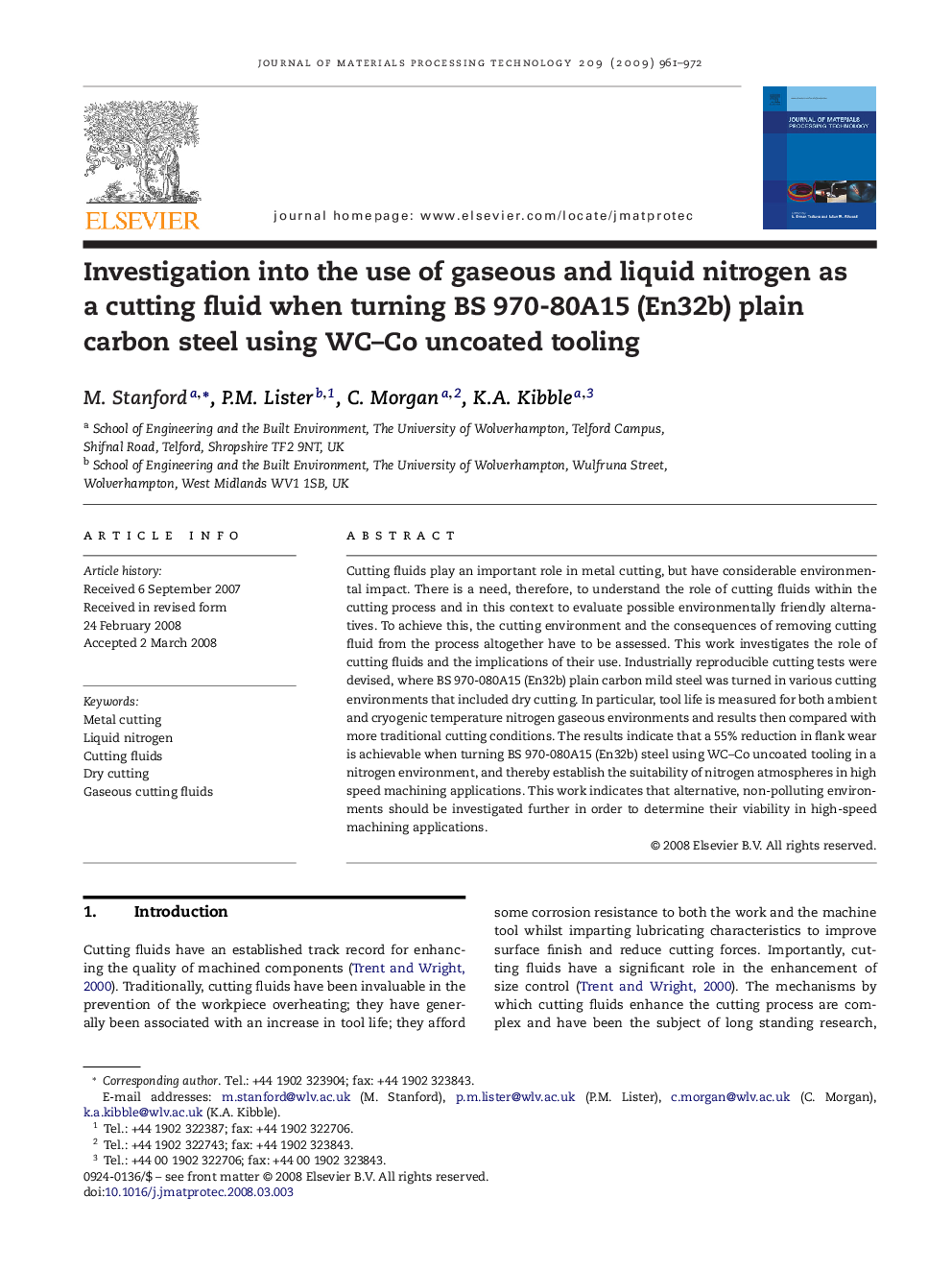| Article ID | Journal | Published Year | Pages | File Type |
|---|---|---|---|---|
| 796199 | Journal of Materials Processing Technology | 2009 | 12 Pages |
Cutting fluids play an important role in metal cutting, but have considerable environmental impact. There is a need, therefore, to understand the role of cutting fluids within the cutting process and in this context to evaluate possible environmentally friendly alternatives. To achieve this, the cutting environment and the consequences of removing cutting fluid from the process altogether have to be assessed. This work investigates the role of cutting fluids and the implications of their use. Industrially reproducible cutting tests were devised, where BS 970-080A15 (En32b) plain carbon mild steel was turned in various cutting environments that included dry cutting. In particular, tool life is measured for both ambient and cryogenic temperature nitrogen gaseous environments and results then compared with more traditional cutting conditions. The results indicate that a 55% reduction in flank wear is achievable when turning BS 970-080A15 (En32b) steel using WC–Co uncoated tooling in a nitrogen environment, and thereby establish the suitability of nitrogen atmospheres in high speed machining applications. This work indicates that alternative, non-polluting environments should be investigated further in order to determine their viability in high-speed machining applications.
